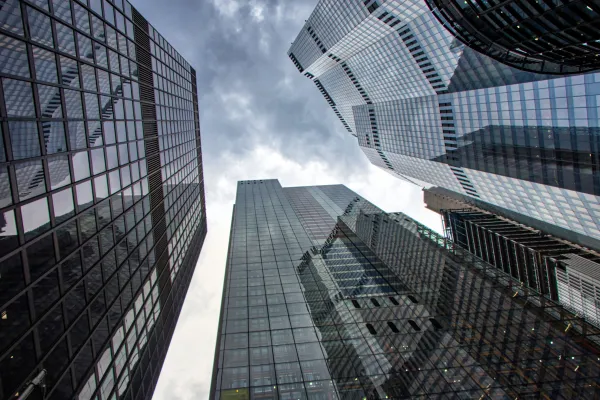Almost half of institutional investors in North America expect volatility to be greater in the next 12 months than it was during the global financial crisis.
That stunning statistic was part of the data released today by U.K.-based asset manager Schroders as part of its annual Global Investor Insights survey.
Broadly, the data show that more than half of big investors in North America expect greater volatility than between 2022 and 2023 when interest rates started rising for the first time in four decades.
Investors blame tariffs. Sixty-three percent of the pension funds, insurance companies, single-family offices, endowments, and foundations surveyed, rank trade issues as their biggest concern. It is worth noting, however, that investors were surveyed in the weeks immediately following the April 2 shock of ‘Liberation Day,’ so opinions were likely heightened by the levels of uncertainty during that period.
Tariffs were followed directly by inflation as a top concern, even though only 10 percent of those surveyed named rising prices as their biggest worry.
As a result of these concerns, a larger percentage of investors indicated they were focused on active management and private markets than in previous surveys, which the firm has been running for a decade. More than three quarters suggested they are more likely to use active management in the coming year than in previous years, with 78 percent expressing concern about the concentration risk that can be associated with a passive strategies. This marks a distinct shift away from a prioritization of growth to one of resilience and diversification, Schroders CEO Richard Oldfield told II.
Eighty-percent of investors are interested in active strategies going forward, "and that is really reinforcing the fact that only active management gives you a forward-looking view of balancing risk and reward,” he said. “It allows you to have a very precise company-by-company analysis of where you think you could drive value, and in the world where we've got such extreme concentration, it gives you a really different profile than a passive investment portfolio.”
He added that it was notable that 55 percent of investors said building portfolio resilience was the number-one priority for the year, rather than growth. For many years, he said, investors have been too reliant on the U.S. markets, specifically the technology-heavy leaders of the S&P 500.
“It is a little bit like Sleeping Beauty. For years, we thought that diversification was a really important tenet of investing. Then suddenly we all went to sleep and decided to go all-in on the U.S. and have less diversification,” continued Oldfield. “And the last few months have sort of made us all wake up and think that diversification might not have been a bad thing after all and could actually enhance resilience."
Respondents who expressed a need to create more portfolio resistance align with conversations that Oldfield is having around the world, including in the U.S., with investors increasingly interested in active management strategies.
Respondents from North America said private credit took the top spot in terms of opportunity in the next 12 months. Global investors, including in the U.S., said the top opportunity was in equities. Schroders said the answered differed because private markets are a bigger part of U.S. investors' portfolios.
“Interest is in direct lending, and there has been a pickup in asset-based finance too, which accounts for about 45 percent of the interest in the private markets,” said Tom Darnowski, CEO, Americas at Schroders. “It is an expanding asset class. And 78 percent of North American respondents are most worried about this concentration risk, even with a home market bias, so it is no surprise.”
Despite the unique timing of the research, Darnowski said that the response would yield similar results if done today and that volatility concerns remain high. Asked what might happen if tariffs are widely redeployed on July 9 as is currently scheduled by the administration, he said investors may panic again. If the same thing were to happen again, he said, “don’t expect the markets to sit back and stay quiet.”
Although already focused on active investing strategies, based on this data the firm will lean into private credit and asset-backed finance, helping clients diversify and increase portfolio resilience as they look for the best return on investments in a volatile environment.







